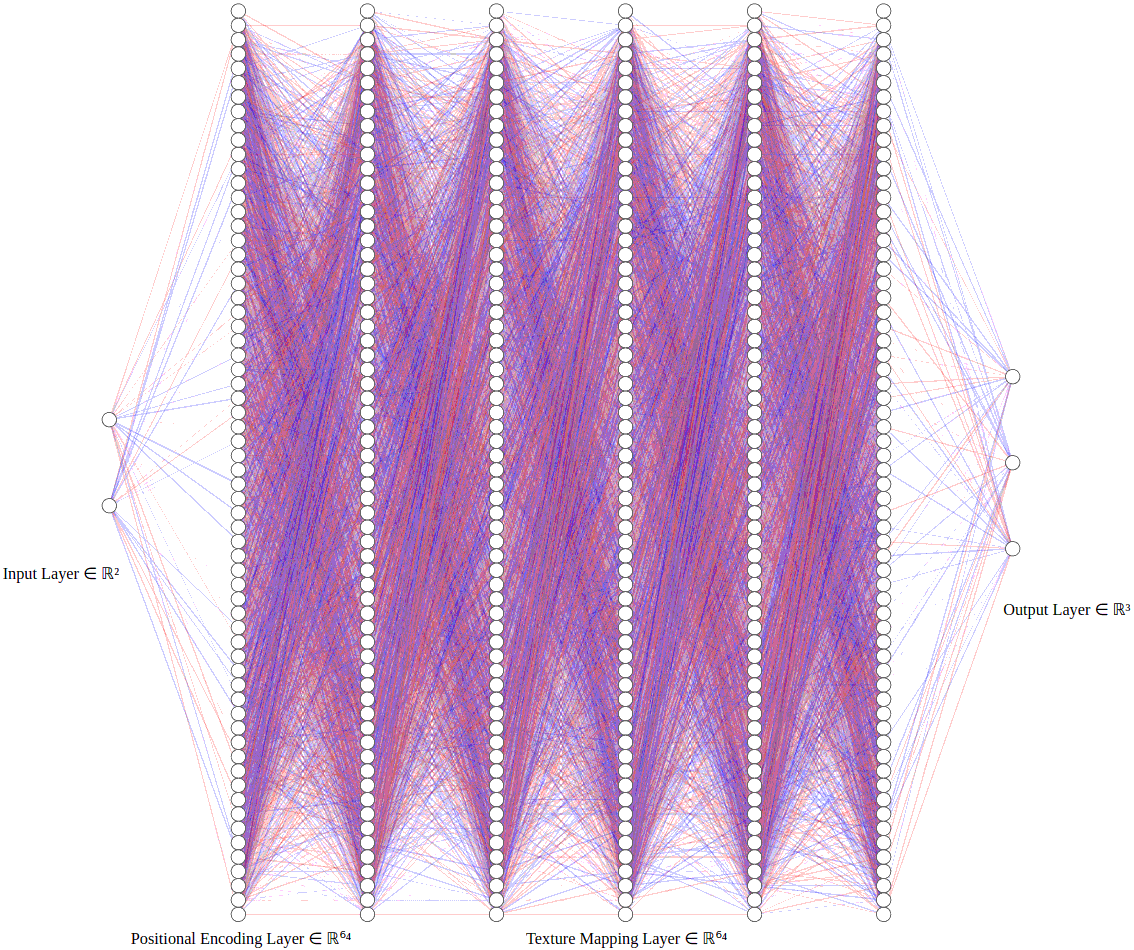
The idea is to represent the 2D texture by the neural network:
class PositionalEncodingLayer(tensorflow.keras.layers.Layer):
def __init__(self, num_frequencies, **kwargs):
super(PositionalEncodingLayer, self).__init__(**kwargs)
self.num_frequencies = num_frequencies
def call(self, inputs):
encoded = []
for i in range(self.num_frequencies):
encoded.append(tensorflow.math.sin((1 << i) * tensorflow.constant(numpy.pi) * inputs))
encoded.append(tensorflow.math.cos((1 << i) * tensorflow.constant(numpy.pi) * inputs))
return tensorflow.concat(encoded, axis=-1)
def get_config(self):
config = super(PositionalEncodingLayer, self).get_config()
config.update({"num_frequencies": self.num_frequencies})
return config

NUM_FREQUENCIES = 16
NUM_NEURONS_PER_TEXTURE_MAPPING_LAYER = 64
NUM_TEXTURE_MAPPING_LAYERS = 5
assert PositionalEncodingLayer(num_frequencies=NUM_FREQUENCIES)(tensorflow.random.uniform((7, 2))).shape == (7, NUM_FREQUENCIES * 4)
keras_model = tensorflow.keras.models.Sequential()
keras_model.add(tensorflow.keras.layers.InputLayer(shape=(2,)))
keras_model.add(PositionalEncodingLayer(num_frequencies=NUM_FREQUENCIES))
for i in range(NUM_HIDDEN_LAYERS):
keras_model.add(tensorflow.keras.layers.Dense(NUM_NEURONS_PER_TEXTURE_MAPPING_LAYER, activation="relu"))
keras_model.add(tensorflow.keras.layers.Dense(3, activation="linear"))
[Boksansky 2024] Jakub Boksansky. "Crash Course in Deep Learning (for Computer Graphics)." AMD GPUOpen 2024.